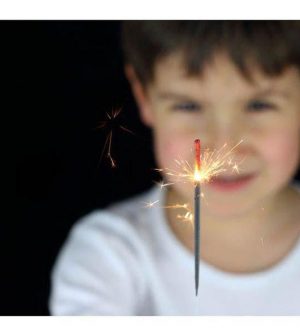- Skip Storing This Everyday Product in the Fridge Door
- Green Tea + B3 Pairing May Boost Brain Health
- Navigating Your Midlife Crisis: Embracing New Possibilities
- City Raccoons Showing Signs of Domestication
- Mapping the Exposome: Science Broadens Focus to Environmental Disease Triggers
- One Week Less on Social Media Linked to Better Mental Health
- Your Brain Changes in Stages as You Age, Study Finds
- Some Suicide Victims Show No Typical Warning Signs, Study Finds
- ByHeart Formula Faces Lawsuits After Babies Sickened With Botulism
- Switch to Vegan Diet Could Cut Your Greenhouse Gas Emissions in Half
For Kids, Accidental Burns Another Scar of the Pandemic

Accidental burns among U.S. children rose by one-third during the first months of the COVID-19 pandemic, according to a new study.
“COVID-19 and stay-at-home orders inevitably created a new dynamic between children and their social environment. One result was the increased risk of burns those children experienced,” said Dr. Christina Georgeades, a study author and pediatric surgery research fellow at Children’s Wisconsin, in Milwaukee.
“Understanding specific factors that contributed will be key in minimizing the risk of future burn injuries as we continue to navigate the pandemic environment,” Georgeades added in a news release from the American Academy of Pediatrics (AAP).
Many children stayed home from school and may have been unsupervised at times. Most burns among children occur at home and unwatched children are at increased risk for burns and other accident-related injuries.
For the study, the researchers analyzed data from nine trauma centers in the United States. The investigators found the total number of children treated for burn injuries rose from 394 in 2019 — before the pandemic took hold in the United States — to 522 in 2020. That’s about a 33% increase.
Fireworks were partly to blame, according to the researchers.
While the study found an increase in all types of burns between 2019 and 2020, the largest increase was in burns from open fires, which could include fireworks-related burns.
The study authors noted that burn injuries spiked in July, when firework injuries are common in the United States due to the Independence Day holiday. And because professional firework shows were canceled nationwide in 2020, there may have been a rise in amateur fireworks, leading to an increased risk of fireworks-related burns.
The findings are to be presented Sunday at the virtual AAP national conference. Data presented at meetings is usually considered preliminary until published in a peer-reviewed medical journal.
More information
The American Academy of Pediatrics has more on treating and preventing burns.
SOURCE: American Academy of Pediatrics, news release, Oct. 8, 2021
Source: HealthDay
Copyright © 2025 HealthDay. All rights reserved.










